- Top
- > Japanese Authors of Children's Literature: A Special-Feature Section of Outstanding Authors
Japanese Authors of Children's Literature: A Special-Feature Section of Outstanding Authors
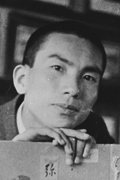
Courtesy of Niimi Nankichi Memorial Museum
Nankichi Niimi
1913-1943 List of books
Nankichi Niimi is the pen name of Shohachi Niimi, who was born in Aichi Prefecture and graduated from Handa secondary school under the pre-WWⅡ educational system. While working as a substitute elementary teacher, he began submitting doyo (children’s songs) and dowa (children’s stories) to the children’s magazine Akai tori [Red bird], using the pen name Nankichi. He published doyo like Mado [Window] and dowa like Shobo to Kuro [Shobo and Kuro] and Gongitsune [Gon, the little fox] in Akai tori. He became acquainted with Seika Tatsumi and Junichi Yoda through his association with the doyo poets’ magazine Chichinoki [Ginkgo], which was put together by followers of Hakushu Kitahara, who screened the doyo submitted to Akai tori.
He later moved to Tokyo, where he graduated from the Department of English at the Tokyo School of Foreign Languages, presently Tokyo University of Foreign Studies. After working several different jobs, he became a teacher at the Anjo women’s high school, presently Anjo high school. He published his first collection of dowa, entitled Ojiisan no ranpu [Grandfather’s lamp], in 1942. Sadly, he died at the young age of 29 from tuberculosis. Soon after his death, two anthologies of his dowa were published: Ushi wo tsunaida tsubaki no ki [The cow tied to the camellia tree] and Hananokimura to nusubitotachi [Hananoki village and the thieves]. Nimi's dowa provide detailed depictions country life. Even today, Gongitsune remains well known thanks to its inclusion in elementary school Japanese textbooks.
The opening to Gongitsune begins: I first heard this story when I was child from an old man named Mohei, who lived in my village. The reader is drawn in and reads the story as if he was listening to the old man tell the tale himself. From the first line, we are given a glimpse into the fact that a tragic story, in which Hyoju never quite understood the feelings of little Gon, has been passed down among the villagers. We can hear the narrator’s voice, pulling us into this fictional world, which is perhaps the greatest of Niimi’s dowa.
A comparison of the text published in Akai tori with the original manuscript found in Niimi's notebooks shows significant diffences. It is possible that Akai tori editor-in-chief Miekichi Suzuki made editorial changes. Seika Tatsumi who was entrusted with Niimi's manuscripts worked to popularize them. A mention of wartime activities in the text resulted in the Office of the Supreme Commander of the Allied Powers requiring Tatsumi to amend the text to meet postwar censorship rules. It was not until the publication of Dainippon Tosho’s Kotei Niimi Nankichi zenshu [The revised complete works of Nankichi Niimi, in 12 volumes and 2 supplementary series] between 1980 and 1983 that Niimi's original work became available in its intended form. It might be worth reconsidering what Niimi tried to say in his stories and what we have cleaned from them thus far.
C-5-1Hananokimura to nusubitotachi [Hananoki village and the thieves]
Written by Nankichi Niimi/Illustrated by Yasunori Taninaka
Teikoku Kyoikukai Shuppanbu 1943
(Shokokumin bungeisen [The selection of Series for Japanese young nationals] 6)
Call No. 児952-35-[6]
The third dowa (children’s stories) collection published on September 30th, half a year after Nankichi's death. Includes three stories that Nankichi sent to Jun'ichi Yoda which were published in Akai tori [Red bird], and four new stories.
C-5-2Hananokimura to nusubitotachi [Hananoki village and the thieves]
Written by Nankichi Niimi/Illustrated by Yasunori Taninaka
Kokumin Tosho Kankokai 1947
(Shin nihon shokokumin bunko [New series for Japanese young nationals])
Call No. 児93-N-1
First printed in 1946, only five months after the end of the war. Reissue of the first edition(C-5-1) published by Jun'ichi Yoda. Part of Watarosan to ushi [Wataro and the cow] has been revised and Toriemon shokoku wo meguru [Toriemon travels the country] has been deleted, possibly because it was time under the American military occupation.
C-5-3Ushi wo tsunaida tsubaki no ki [The cow tied to the camellia tree]
Written by Nankichi Niimi/Illustrated by Shosuke Osawa
Chuoh Publishing 1946
Call No. 児995-143 (First ed. 児971-66)
One of the four books issued by Chuoh Publishing and edited by Seika Tatsumi. It was based on the second dowa (children's stories) collection published by Yamato Shoten as Nihon shokokumin bungaku shin'ei sosho [Japanese young nationals' latest literature series] on September 10th, 1943, consisting of seven new pieces which Nankichi sent to Seika Tatsumi before his death, but a story Mimi [Ear] which had a strong war element was deleted in the republication as a result of GHQ censorship.
C-5-4Watarosan to ushi [Wataro and the cow]
Written by Nankichi Niimi/Illustrated by Shosuke Osawa
Chuoh Publishing 1946
Call No. 児995-101
Edited by Seika Tatsumi, who is also the editor of Ushi wo tsunaida tsubaki no ki [The cow tied to the camellia tree] (C-5-3). Includes five stories. As a result of GHQ censorship, the title story has been revised.
C-5-5Kyusukekun no hanashi: Niimi Nankichi dowa senshu [Story about Kyusuke: The selection of Nankichi Niimi's children's stories]
Written by Nankichi Niimi/Edited by Seika Tatsumi
Chuoh Publishing 1946
Call No. Y8-N06-H286
Consists of six stories such as the Kyusuke mono (Kyusuke series) featuring a boy called Kyusuke and other dowa (children's stories) for young children. Four stories including the title story have been partially revised as a result of GHQ censorship. The title story first appeared in the Harubin nichinichi shimbun [Harbin daily newspaper] and was planned to be used as the main title of the first dowa collection. The book design and illustrations are done by Ryu Osanai.
C-5-6Saigo no kokyuhiki [The last player of a Chinese fiddle]
Written by Nankichi Niimi/Illustrated by Noritsugu Horiuchi
Chuokoron-Sha 1949
(Tomodachi bunko [Friend library] 37)
Call No. 児93-N-4
Consists of five stories including the title story Kitsune [The fox] which was written in 1943, when Nankichi was sick. A dowa (children’s stories) collection published commemorating the seventh anniversary of his death. Seika Tatsumi contributed a commentary about mourning Nikichi's death in this book.
C-5-7Niimi Nankichi dowa meisakusen [The selection of Nankichi Niimi's best children's stories]
Illustrated by Chiharu Nomura
Haneda Shoten 1950
(PTA bunko Nihon dowa meisakushu [PTA library, collection of the best Japanese children's stories] 8)
Call No. 児93-N-3
Six dowa (children's stories) written while facing death, show the deepening of his inner self. The illustrator Chiharu Nomura (wife of Seika Tatsumi) devotedly supported Nankichi along with her husband.
C-5-8Gongitsune [Gon, the little fox]
Written by Nankichi Niimi/Illustrated by Sho Nakao
Chikuma Shobo 1951
(Shogakusei zenshu [The complete works for elementary school children] 6)
Call No. 児913.8-N695g
This was the first time that Chidori [The plover] and Rampu no yoru [The night under a lamp] was published. Chou Kourin first appeared in the November 1931 issue of Akai tori [Red bird] and was included in the dowa (children's stories) collection for the first time after World War II. Illustrations of the book cover, frontispiece, and artworks are by Sho Nakao.
C-5-9Gongitsune [Gon, the little fox]
Written by Nankichi Niimi/Illustrated by Sho Nakao
Chikuma Shobo 1962
(Shinpan shogakusei zenshu [The new edition of complete works for elementary school children] 26)
Call No. 児080-Sy956-[26](First ed. 児913.8-N695g)
Republication of the dowa (children’s stories) collection Gongitsune [Gon, the little fox] (Shougakusei zenshu [Complete works for elementary school students] 6) by Chikuma Shobo in 1951. Sho Nakao is a Western painter and a douga (children’s pictures) artist who was involved in the art movement for children. His works include illustrations for many of Joji Tsubota's books. Shown here is the image of Ojiisan no ranpu [Grandfather's lamp].
C-5-10Niimi Nankichi dowa zenshu [The collection of Nankichi Niimi's children's stories] vol. 1-3
Dainippon Tosho 1960
Call No. 児913.8-N695n
Nankichi Niimi's first dowa (children's stories) collection jointly edited by Seika Tatsumi, Joji Tsubota, Kanji Hatano, and Jun'ichi Yoda. As some stories were based on the revised book published after the war, there are few adjustments left. Book design is by Sadao Ichikawa, illustration by Tetsuomi Tateishi for the first volume, Sadao Ichikawa for the second volume, Daihachi Ota for the third volume. Shown here is the title page of the vol.1.
C-5-11Niimi Nankichi zenshu, daiichi (Dowashu daiichi) [The complete works of Nankichi Niimi, no. 1 (The collection of children's stories, no. 1)]
Edited by Seika Tatsumi and Michio Namekawa
Maki Shoten 1965
Call No. 918.6-N695n
Eight-volume set. Edited by Seika Tatsumi and Michio Namekawa who is a scholar of children's literature. Based on Niimi Nankichi zenshu [The complete works of Nankichi Niimi] published by Dainippon tosho. Nankichi's diary and other personal documents were revealed for the first time, and received severe criticism.
C-5-12Kotei Niimi Nankichi zenshu, daiikkan (dowa, shosetsu 1) [Variorum of Nankichi Niimi's complete works, vol.1 (children's stories, novels 1)]
Dainippon Tosho 1980
Call No. KH436-88
This complete collection includes all works by the author, and was edited to disclose the revising process by looking back to the draft. Twelve-volume set with two supplement volumes. The first volume includes a story from his first book Ryokan monogatari, temari to hachinoko [Ryokan's story, handball and a begging bowl]. The top half of the page shows the first edition published by Gakushu-Sha in 1941 which this book used as the original book, and the bottom half of the page shows the autograph manuscript.
C-5-13Kotei Niimi Nankichi zenshu, daijukkan (nikki, noto 1) [Variorum of Nankichi Niimi's complete works, vol. 10 (diaries, notebooks 1)
Dainippon Tosho 1981
Call No. KH436-88
The tenth volume includes his notebooks and diaries from 1922 to 1931. This image shows the part written as Gongitsune(権狐) [Gon, the little fox] submitted to Akai Tori [Red bird]. This was written on the draft book called Suparuta noto (Spartan notebook). The date 'October 4th, 1931' is noted at the end of the page, which is thought to be either the rough draft of Gongitsune(ごん狐) [Gon, the little fox] carried in the January 1932 issue of Akai tori or the copy of the draft he submitted.
C-5-14Niimi Nankichi no sekai [The world of Nankichi Niimi]
Written by Takuya Hamano
Shinhyoron Publishing Inc. 1973
Call No. KG582-29
A critique which can be taken as criticism of Nankichi's published works. When the paperback edition came out in 1981, references were modified based on the revised complete works. The author is a children's literature writer and a critic. He has published many original stories such as Hori no aru mura [The village with a moat] and Yamanba Oyuki [Oyuki, the mountain ogress] as well as children's literature research books. Shown here is the title page.
C-5-15Niimi Nankichi dowaron: Jiko hokisha no totatsu [Theories on Nankichi Niimi’s children's stories: the point of self-renunciation]
Written by Michimasa Sato
Maki Shoten 1970
Call No. KG582-13
A literary critique highly recognized for overviewing for the first time the full spectrum of work by Nankichi Niimi and his personality. Michimasa Sato was a poet and critic from Iwate Prefecture and was highly trusted by Seika Tatsumi.
C-5-16Shinpen Niimi Nankichi daihyosakushu [The new edition of Nankichi Niimi's masterpieces]
Edited by Handa City Board of Education
Handa City Board of Education 1994
Call No. KH436-E221
Collection of masterpieces of Nankichi, compiled by Handa City in commemoration of the 80th anniversary of his birth (fifty years after his death). Not for sale. Includes thirteen dowa (children's stories), five novels, poems, tanka (Japanese short poems), and haiku, as well as Gongitsune [Gon, the little fox] written in Suparuta noto (Spartan notebook) which enables the reader to learn about Nankichi's work in general.
C-5-17Dendenmushi no kanashimi [The sorrows of a little snail]
Written by Nankichi Niimi /Illustrated by Shin Kamiya
Dainippon Tosho 1999
Call No. Y8-M99-613
Consists of five stories. The title story is published in a picture book format for the first time. The scene starts from yellow but changes to a cold color when the snail notices his sad feelings and then changes to rose pink symbolizing him as full of hope when he stops grieving.
C-5-18Hana wo umeru [Burying flowers]
Written by Nankichi Niimi/Illustrated by Hanmo Sugiura
Komine Shoten 2004
(Niimi Nankichi dowa kessakusen [The selection of Nankichi Niimi's best children's stories])
Call No. Y8-N04-H720
Consists of five dowa (children's stories) including the title story which connects the beauty of a flower buried in the earth with the girl who buried it, and poems, doyo (children's songs), tanka (Japanese short poems), and haiku. Nankichi first wrote tanka-style poems at the age of eleven. In his short life, he wrote two hundred tankas and four hundred haikus.
C-5-19Kodomo no sukina kamisama [The God who likes children]
Written by Nankichi Niimi /Illustrated by Eigoro Futamata
Komine Shoten 2004
(Niimi Nankichi dowa kessakusen [The selection of Nankichi Niimi's best children's stories])
Call No. Y8-N04-H722
Consists of five dowa (children’s stories) for young children including the title story about a god who likes children and who drops a little red shoe at the end. They are in picture dowa style with an expressive illustration for each page. Nankichi once said that he "writes half of dreams and reality." Readers can see Nankichi’s dreams through his works.
C-5-20Gacho no tanjobi [The Goose's Birthday]
Written by Nankichi Niimi/Illustrated by Yoji Watanabe
Komine Shoten 2004
(Niimi Nankichi dowa kessakusen [The selection of Nankichi Niimi's best children's stories])
Call No. Y8-N04-H723
Consists of five dowa (children’s stories) for young children with a variety of themes including folk tales and works which resemble children's stories from overseas. Illustrations are drawn with clear outlines and in a simple approachable style, suitable for young readers.
C-5-21Gongitsune [Gon, the little fox ]
Written by Nankichi Niimi/Illustrated by Genjiro Mita
POPLAR Publishing 1969
(Ohanashi meisaku ehon [The best story picture books] 1)
Call No. Y17-379
A picture book with a simple warm tone. Illustration by Genjiro Mita, a picture-book author active from the end of the Showa era, involved in the art education movement.
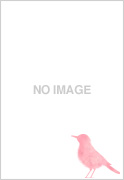
C-5-22Le petit renard Gon
Written by Nankichi Niimi/Illustrated by Ken Kuroi/Translated by Hélène Morita
Éditions Grandir c1991
Call No. Y19-A22
French version of Gongitsune [Gon, the little fox] illustrated by Ken Kuroi. The direct translation of the French title is Chiisana kitsune Gon [Little fox Gon]. A picture book whose illustrations have a soft yet refined atmosphere.
C-5-23Gongitsune [Gon, the little fox]
Written by Nankichi Niimi/Illustrated by Masahiro Kasuya
Asunaro Shobo 1998
Call No. Y17-M99-19
A picture book with clear-cut illustrations like a shadow picture. Masahiro Kasuya, the illustrator, has published picture books overseas and had received the Bologna Ragazzi Award's Critic's Award in 1978 for Noa no hakobune [Noah's ark].
C-5-24Gongitsune [Gon, the little fox]
Written by Nankichi Niimi/Illustrated by Teruyo Endo
Dainippon Tosho 2005
(Ehon - Niimi Nankichi no sekai [Picture book - The world of Nankichi Niimi])
Call No. Y17-N05-H239
A picture book that is modern but has a friendly style. Teruyo Endo, the illustrator, has also worked on the illustrations of Tenori bunko Niimi Nankichi dowa sakuhinshu [Palm-size library, collection of children's stories by Nankichi Niimi], a five-volume series published by Dainippon Tosho.
C-5-25Gongitsune [Gon, the little fox]
Written by Nankichi Niimi/Illustrated by Shinbo Minami/Edited by Takeo Miyakawa
Iwasaki Shoten 2012
(Ichinensei kara yomeru Nihon no meisaku edowa [The best Japanese children's picture stories suitable from first grade] 4)
Call No. Y8-N12-J644
An illustrated picture book that is simple yet so absorbing. Shinbo Minami, the illustrator, also works as a book cover designer and essayist.
C-5-26Tebukuro wo kai ni [Buying mittens]
Written by Nankichi Niimi/Illustrated by Ken Wakayama
POPLAR Publishing 1970
(Ohanashi meisaku ehon [The best story picture books] 4)
Call No. Y17-3371
Though the illustrations in this picture book are formed simply, they are warm. Commentaries are written by Seika Tatsumi. Ken Wakayama, who changed his career from a graphic designer to a children's book author, has masterpieces such as Kitsuneyama no yomeiri [The wedding at fox mountain] and the Kogumachan ehon [Little bear picture books] series.

C-5-27小狐狸买手套
Written by Nankichi Niimi/Illustrated by Ken Wakayama/Translated by Weiyan Cui
二十一世纪出版社 2009
(蒲蒲兰绘本馆)
Call No. Y18-AZ6083
The Chinese version of the picture book Tebukuro wo kai ni [Buying mittens] with illustrations by Ken Wakayama.
C-5-28小狐狸买手套
Written by Nankichi Niimi/Translated by Longmei Zhou and Yi Peng
贵州人民出版社 2010
(蒲蒲兰绘本馆)
Call No. Y9-AZ5676
The title story is the Chinese version of Tebukuro wo kai ni [Buying mittens]. The book also includes Chinese translations of Gongitsune [Gon, the little fox], Kitsune [The fox], Ichimai no hagaki [One postcard], Uta dokei [A music clock], Nanashi yubi monogatari [A tale of a nameless finger], and Shobo to Kuro [Shobo and Kuro].
C-5-29Tebukuro wo kai ni [Buying mittens]
Written by Nankichi Niimi/Illustrated by Kozo Kakimoto
CHILD HONSHA 1982
(Chairudo ehonkan, Nihon no meisaku [Child picture books, Japanese masterpieces])
Call No. Y17-9086
A little fox is illustrated charmingly with soft color tones in this picture book. The illustrator, Kozo Kakimoto, started his career illustrating young children's picture magazines and then went into creating picture books. His masterpieces include the Donkumasan [Helpful Mr. Bear] series.
C-5-30去年的树
Written by Nankichi Niimi/Translated by Longmei Zhou and Yi Peng
同心出版社 2010
(美冠纯美阅读书系. 外国卷. 新美南吉专集)
Call No. Y9-AZ5675
The title is the Chinese translation of Kyonen no ki [The tree of last year]. In this book, thirty-eight other stories are categorized into four themes and provided with detailed explanations.
C-5-31Kitsune [The fox]
Written by Nankichi Niimi/Illustrated by Hideko Nagano
Kaiseisha 1999
(Nihon no dowa meisakusen [The selection of best Japanese children's stories])
Call No. Y17-M99-648
A picture book vividly depicting children and animals with a simple touch. Hideko Nagano is a picture-book author. Her masterpieces include Okasan ga okasan ni natta hi [The day mother became mother], Setouchi Taikosan depato ikitai [Taiko Setouchi wants to go to the department store], and others.


![Thumbnail of Hananokimura to nusubitotachi [Hananoki village and the thieves]](img/t_image_person05_01.jpg)
![Thumbnail of Hananokimura to nusubitotachi [Hananoki village and the thieves]](img/t_image_person05_02.jpg)
![Thumbnail of Ushi wo tsunaida tsubaki no ki [The cow tied to the camellia tree]](img/t_image_person05_03.jpg)
![Thumbnail of Watarosan to ushi [Wataro and the cow]](img/t_image_person05_04.jpg)
![Thumbnail of Kyusukekun no hanashi: Niimi Nankichi dowa senshu [Story about Kyusuke: The selection of Nankichi Niimi's children's stories]](img/t_image_person05_05.jpg)
![Thumbnail of Saigo no kokyuhiki [The last player of a Chinese fiddle]](img/t_image_person05_06.jpg)
![Thumbnail of Niimi Nankichi dowa meisakusen [The selection of Nankichi Niimi's best children's stories]](img/t_image_person05_07.jpg)
![Thumbnail of Gongitsune [Gon, the little fox]](img/t_image_person05_08.jpg)
![Thumbnail of Gongitsune [Gon, the little fox]](img/t_image_person05_09.jpg)
![Thumbnail of Niimi Nankichi dowa zenshu [The collection of Nankichi Niimi's children's stories] vol. 1-3](img/t_image_person05_10.jpg)
![Thumbnail of Niimi Nankichi zenshu, daiichi (Dowashu daiichi) [The complete works of Nankichi Niimi, no. 1 (The collection of children's stories, no. 1)]](img/t_image_person05_11.jpg)
![Thumbnail of Kotei Niimi Nankichi zenshu, daiikkan (dowa, shosetsu 1) [Variorum of Nankichi Niimi's complete works, vol.1 (children's stories, novels 1)]](img/t_image_person05_12.jpg)
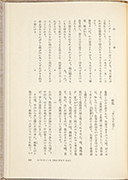
![Thumbnail of Niimi Nankichi no sekai [The world of Nankichi Niimi]](img/t_image_person05_14.jpg)
![Thumbnail of Niimi Nankichi dowaron: Jiko hokisha no totatsu [Theories on Nankichi Niimi’s children's stories: the point of self-renunciation]](img/t_image_person05_15.jpg)
![Thumbnail of Shinpen Niimi Nankichi daihyosakushu [The new edition of Nankichi Niimi's masterpieces]](img/t_image_person05_16.jpg)
![Thumbnail of Dendenmushi no kanashimi [The sorrows of a little snail]](img/t_image_person05_17.jpg)
![Thumbnail of Hana wo umeru [Burying flowers]](img/t_image_person05_18.jpg)
![Thumbnail of Kodomo no sukina kamisama [The God who likes children]](img/t_image_person05_19.jpg)
![Thumbnail of Gacho no tanjobi [The Goose's Birthday]](img/t_image_person05_20.jpg)
![Thumbnail of Gongitsune [Gon, the little fox ]](img/t_image_person05_21.jpg)
![Thumbnail of Gongitsune [Gon, the little fox]](img/t_image_person05_23.jpg)
![Thumbnail of Gongitsune [Gon, the little fox]](img/t_image_person05_24.jpg)
![Thumbnail of Gongitsune [Gon, the little fox]](img/t_image_person05_25.jpg)
![Thumbnail of Tebukuro wo kai ni [Buying mittens]](img/t_image_person05_26.jpg)
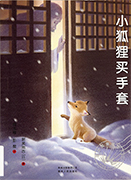
![Thumbnail of Tebukuro wo kai ni [Buying mittens]](img/t_image_person05_29.jpg)
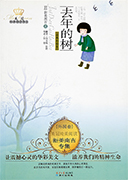
![Thumbnail of Kitsune [The fox]](img/t_image_person05_31.jpg)


















